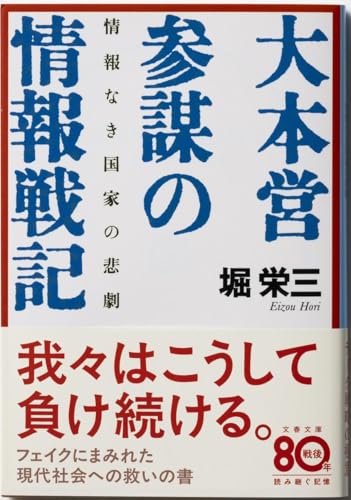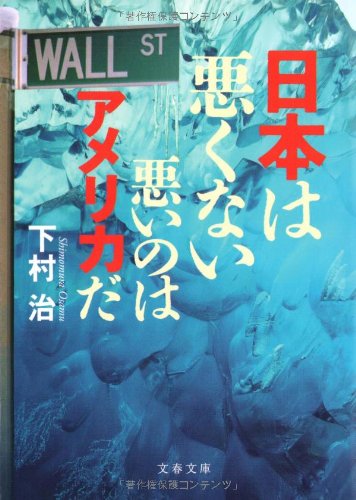1 0 0 0 IR 近世の念仏聖無能の教化と天童青柳家の信仰と慈善
- 著者
- 長谷川 匡俊 Masatoshi Hasegawa
- 出版者
- 淑徳大学
- 雑誌
- 淑徳大学研究紀要 (ISSN:02851245)
- 巻号頁・発行日
- no.29, pp.p329-380, 1995-03
1 0 0 0 磐梯山噴火に関する災害情報の社会史的分析
- 著者
- 北原糸子
- 出版者
- 特定非営利活動法人 日本火山学会
- 雑誌
- 火山 (ISSN:04534360)
- 巻号頁・発行日
- vol.43, no.5, pp.297-321, 1998
- 参考文献数
- 64
- 被引用文献数
- 1
The purpose of this paper is to give an analysis of the spreading of disaster information in the case of 1888 A.D. eruption of Bandai Volcano. A socio-historical approach focusing on newspaper articles, magazines, and other printed matters is adopted to analyze the disaster process. The 1888 eruption of Bandai Volcano was the first experience of a great natural disaster for the Meiji government, which was just under the process of developing the modern nation. The social structure of information in the transit time and its relation to the modernization process in the educational field of physical geography, will be discussed. The newspaper articles about the Bandai Eruption can be characterized into the following three stages in chronological order; l) Reports on the outbreak of the disaster, the initial damage, and the dispatch of the government officials for investigations of the volcano. 2) Further reports on the damage and the donation campaign raised by the newspapers. 3) More on donation campaigns for much more donations among the general public. These three stages clearly show that the social background had changed from the pre-modern society. Having gone through the contemporary understandings about volcanic eruptions and earthquakes with the age of Bandai eruption, and taking the modernization of educational system into consideration, the following reasons for the changes can be pointed out; (a) After the Meiji Restoration accompanied with the so-called "Scientific Revolution" of Japan, the young generation raised under the modern educational system had more scientific attitude to natural phenomena than those of previous generations. (b) The combined effect of the traditional system of charity activities and the new type of donation which was raised by newspapers and other media, such as disaster photographs or charity performances were quite effective in helping the people struck with the disaster under the conditions of the insufficient governmental relief.
1 0 0 0 IR 資料 武州一揆の史料紹介--森村新蔵「享和以来新聞記」より
- 著者
- 落合 延孝
- 出版者
- 群馬大学社会情報学部
- 雑誌
- 群馬大学社会情報学部研究論集 (ISSN:13468812)
- 巻号頁・発行日
- vol.10, pp.245-276, 2003
This paper shows the historical Documents of ""Busyu-ikki"", Kyowa-Irai-Shinbunki written by Shinzou Morimura.
1 0 0 0 炭焼藤太伝承と在地縁起--『奥州仙台栗原郡畑村縁起』の紹介と翻刻
- 著者
- 大島 由紀夫
- 出版者
- 群馬工業高等専門学校
- 雑誌
- 群馬高専レビュー (ISSN:02886936)
- 巻号頁・発行日
- no.25, pp.9-21, 2006
Sumiyaki-Tota( 炭焼藤太) legend is a type of Sumiyaki-Chojya( 炭焼長者) legend which has a nationwide distribution. Sumiyaki-Tota legend has been told in the Tohoku district. The legend has been connected with the history of the temples or the shrines in many cases. Sumiyaki means a charcoal burner. Oshu Sendai Kuriharagun Hatamura Engi( 奥州仙台栗原郡畑村縁記) is a text recording Sumiyaki-Tota legend which has been handed down in the Kannari Town, Miyagi prefecture. Former Hatamura village is a part of the Kannari Town at present. The text was written by Umonbo( 右門坊) in 1789. Umonbo was a priest belonged to Haguro Shugen( 羽黒修験) sect. The content in the first half of the text is concerned with the history of Jyofukuji( 常福寺) temple. Umonbo explained that Jyofukuji was built by Sumiyaki-Tota and his wife called Okoyonomae( おこよの前) in the later Heian period, and that Tota and Okoyonomae were parents of Kaneuri-Kichiji( 金売吉次) who was a legendary hero in the Tohoku district. In 1686, Jyofukuji published Sumuyaki-Tota-shi( 炭焼藤太史) which recorded a brief outline of Sumiyaki-Tota legend. By comparing the text with Sumuyaki-Tota-shi, we can know that the text has the specific characteristics of going into the details about how Tota and Okoyonomae became a husband and wife. The content in the second half of the text is concerned with the history and the geography of Hatamura village. Most of the description was based on Honai Fudoki( 封内風土記) and Anei Fudoki( 安永風土記). Honai and Anei Fudoki were compiled by the Sendai Clan. Oshu Sendai Kuriharagun Hatamura Engi is an important material for the legend research, which had not been known until this time. In this paper, the writer has given a bibliographical introduction to the text and reprinted it.
1 0 0 0 IR 村落社会における小謡と能--東北地方の事例から
- 著者
- 奥山 けい子
- 出版者
- お茶の水音楽研究会
- 雑誌
- お茶の水音楽論集 (ISSN:1344672X)
- 巻号頁・発行日
- pp.317-325, 2006-12
1 0 0 0 IR 福島県が昭和6年に刊行した『生活改善指針』について
- 著者
- 礒野 さとみ Satomi Isono
- 出版者
- 昭和女子大学近代文化研究所
- 雑誌
- 学苑 (ISSN:13480103)
- 巻号頁・発行日
- no.815, pp.134-143, 2008-09
1 0 0 0 大本営参謀の情報戦記 : 情報なき国家の悲劇
1 0 0 0 大本営参謀の情報戦記 : 情報なき国家の悲劇
1 0 0 0 日本は悪くない : 悪いのはアメリカだ
1 0 0 0 日本は悪くない : 悪いのはアメリカだ
- 著者
- Nobuyuki Katsumata Daisuke Harama Takako Toda Yuto Sunaga Masashi Yoshizawa Yosuke Kono Yohei Hasebe Keiichi Koizumi Minako Hoshiai Tomohiro Saito Sho Hokibara Koji Kobayashi Miwa Goto Tomoaki Sano Makoto Tsuruta Makoto Nakamura Sonoko Mizorogi Masanori Ohta Mie Mochizuki Hiroki Sato Hiroshi Yokomichi Takeshi Inukai
- 出版者
- Japan Epidemiological Association
- 雑誌
- Journal of Epidemiology (ISSN:09175040)
- 巻号頁・発行日
- pp.JE20210132, (Released:2021-09-04)
- 参考文献数
- 42
- 被引用文献数
- 9
Background: Kawasaki disease is suspected to be triggered by previous infection. The prevention measures for coronavirus disease 2019 (COVID-19) have reportedly reduced transmission of certain infectious diseases. Under these circumstances, the prevention measures for COVID-19 may reduce the incidence of Kawasaki disease.Methods: We conducted a retrospective study using registration datasets of patients with Kawasaki disease who were diagnosed in all 11 inpatient pediatric facilities in Yamanashi Prefecture. The eligible cases were 595 cases that were diagnosed before the COVID-19 pandemic (from January 2015 through February 2020) and 38 cases that were diagnosed during the COVID-19 pandemic (from March through November 2020). Incidence of several infectious disease were evaluated using data from the Infectious Disease Weekly Report conducted by the National Institute of Infectious Diseases.Results: Epidemics of various infectious diseases generally remained at low levels during the first 9 months (March through November 2020) of the COVID-19 pandemic. Moreover, the incidence of COVID-19 was 50–80 times lower than the incidence in European countries and the United States. The total number of 38 cases with Kawasaki disease for the 9 months during the COVID-19 pandemic was 46.3% (−3.5 standard deviations [SDs] of the average [82.0; SD, 12.7 cases] for the corresponding 9 months of the previous 5 years. None of the 38 cases was determined to be triggered by COVID-19 based on their medical histories and negative results of severe acute respiratory syndrome coronavirus 2 testing at admission.Conclusion: These observations provide a new epidemiological evidence for the notion that Kawasaki disease is triggered by major infectious diseases in children.
- 著者
- 植木(永松) 美希
- 出版者
- 養賢堂
- 雑誌
- 畜産の研究 (ISSN:00093874)
- 巻号頁・発行日
- vol.69, no.8, pp.676-680, 2015-08
日本でもようやく放牧畜産基準認証が新しく動き出したので,本稿では,そのなかでも実際に放牧酪農牛乳認証第1号を取得した放牧パスちゃん牛乳を取り上げる。これは,動物福祉認証食品であるという点で価値があり評価できることは間違いないが,山形県酪農協同組合の子会社(株)飯豊ながめやま牧場(生産)-奥羽乳業協同組合(加工)-あいコープみやぎ・ふくしまの協同組合間提携による動物福祉に配慮した新しいフードチェーンの開発であるところにも大きな価値を見出せる。2. 株式会社飯豊ながめやま牧場 1) 牧場の概要と放牧酪農実践牧場認証の取得 飯豊ながめ山牧場は,山形県飯豊連峰の麓に位置する山形県酪農協同組合が2005年に100%出資して営業を開始した牧場である。当初はながめやま牧場と名乗っていたが,その後,飯豊市からも出資があったため,飯豊ながめやま牧場との名称になった。役員は11名,代表取締役は同山形県酪農協同組合の組合長が兼任しているほか全員が組合役員との兼任である。牧場の社員は牧場長1名他8名のスタッフで構成される。こちらは全員が非農家・酪農家出身の20代から30代の若い社員である。総面積約180haの広大な牧場であり,牛舎3棟,堆肥関連施設2棟,搾乳施設一式から構成される。
1 0 0 0 ゴールデンゲートの彼方から
1 0 0 0 OA 「鵜を抱く女」が抱く鳥は何か?コラーゲンタンパクによる遺跡出土鳥類骨の同定
土井ヶ浜遺跡の1号人骨・「鵜を抱く女」と共伴した鳥骨の同定は、弥生文化の宗教儀礼の理解に重要である。しかし、これらの骨は断片化しており、骨形態の観察による同定は困難であった。そこで本研究では、コラーゲンタンパクのアミノ酸配列の違いによる同定を鳥類に初めて適用した。現在日本に生息する鳥類を対象に、同定に役立つアミノ酸配列のピークを特定するとともに、「鵜を抱く女」と共伴した鳥骨を分析した。その結果、「鵜を抱く女」と共伴した鳥骨はフクロウ科のものであることが明らかになった。一方で、これらの鳥骨が人骨に副葬されたかどうかはさらなる検討が必要である。
1 0 0 0 OA ヘルスプロモーションのための人材育成:アドボカシー能力をいかに高めるか?
- 著者
- 江川 賢一
- 出版者
- 日本健康教育学会
- 雑誌
- 日本健康教育学会誌 (ISSN:13402560)
- 巻号頁・発行日
- vol.25, no.1, pp.39-43, 2017 (Released:2017-02-28)
- 参考文献数
- 4
- 被引用文献数
- 1
目的:2016年10月26日に大阪で開催された第75回日本公衆衛生学会総会,日本健康教育学会共催シンポジウム「ヘルスプロモーションのための人材育成:アドボカシー能力をいかに高めるか?」を総括した.内容:神馬征峰氏はヘルスプロモーションにおけるアドボカシーの概念を整理した.国際保健の成功事例から,国際組織と連携した公衆衛生アドボカシー人材育成の重要性を指摘した.春山康夫氏は2015年から実施している日本健康教育学会の研修事例から,学術団体が保健医療スタッフ・研究者のアドボカシースキルの向上を全面的にサポートする必要性を強調した.中村正和氏はわが国のたばこ対策を例に,アドボカシーにつながる政策研究において学術団体,行政および研究者によるPDCAサイクルを通じた人材育成について提言した.盛山正仁氏はバリアフリー法の成功事例を紹介し,健康政策においても研究者や学術団体が積極的に政策提言することが行政府や立法府の認識を変え,政策実現に貢献できる可能性を示唆した.結語:学術団体が連携してアドボカシーへの関心を高め,積極的に政策提言し,公衆衛生分野での研究者,専門職,実践者のアドボカシー能力を高めることが急務である.
- 著者
- 植木(永松) 美希
- 出版者
- 養賢堂
- 雑誌
- 畜産の研究 (ISSN:00093874)
- 巻号頁・発行日
- vol.69, no.10, pp.855-860, 2015-10
本稿では放牧酪農牛乳認証第3号となる「よつ葉放牧生産者指定ノンホモ牛乳」を取り上げる。この牛乳は,高度経済成長期に子供達に安全安心な牛乳を飲ませたいという母親達の強い思いから始まったよつ葉牛乳の共同購入グループの運動の長年にわたる継続から誕生した牛乳である。共同購入は単なる商品購入の手段ではなく共同購入運動という日本で特に発達した消費者運動の1つの形態といえるだろう。筆者は今後の日本酪農の継続発展には消費者の酪農への理解と応援が極めて重要な鍵を握ると考えている。今回の放牧生産者指定ノンホモ牛乳は,本誌8月号で紹介した(株)飯豊ながめやま牧場とあいコープによる放牧パスちゃん牛乳と同様,酪農生産から牛乳消費までを一貫してマネジメントする新しいタイプの酪農乳業フードチェーンでもある。生産には北海道JA忠類管内の5戸の生産者が関わっている。北海道は日本の酪農の中心である。その酪農王国での取り組みという点からも注目できる事例であろう。認証取得第2号は同じく北海道内の個人酪農家である。個人の場合,放牧や放牧認証を活用した多様な経営の展開が実践されているので,また別の機会に是非取り上げたいと考えている。もちろん放牧を実践しながら認証を取得していない酪農家も多く存在するが,今後の日本の酪農経営の発展と多様性を考える上では,認証取得は大きな選択肢の1つとなるであろう。
- 著者
- 野口 真広
- 出版者
- 早稲田大学 地域・地域間研究機構
- 雑誌
- 次世代論集
- 巻号頁・発行日
- vol.1, pp.35-56, 2016-03
1 0 0 0 OA 山崎闇齋學統の教學(上)
- 著者
- 後藤 三郎
- 出版者
- 一般社団法人 日本教育学会
- 雑誌
- 教育学研究 (ISSN:03873161)
- 巻号頁・発行日
- vol.11, no.3, pp.187-212, 1942 (Released:2009-01-13)





